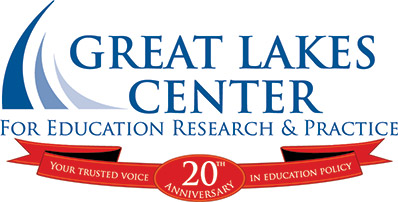
 |
May 25, 2021 |
|
Contacts: What Are the Economic Costs of a Shift to School Vouchers?A NEPC Policy Brief Funded By the GLC Key Takeaway: Brief considers the public cost of a universal voucher system, with its attendant requirements for new systems of governance, information, transportation, and accreditation. EAST LANSING, Mich. (May 25, 2021) - Private-school vouchers are multiplying. In 2021, at least a dozen state legislatures expanded voucher programs or created new such programs. This growth poses questions about what effects a universal voucher system would have on taxpayers. According to a new economic analysis, this economic cost would conservatively amount to between $66.5 billion and $203 billion annually. Authored by professors Robert Shand of American University and Henry Levin of Teachers College, Columbia University, the policy brief released today titled, Estimating a Price Tag for School Vouchers notes that these input questions around vouchers have gone relatively unexamined, compared to the body of research around voucher outcomes. The brief also notes that any cost estimation must be based on considerable assumptions, which is why the brief errs toward conservative estimates and why the resulting range of estimates is quite large. This brief focuses on examining the factors that determine these costs and provides an overview of the literature on the effects and costs of vouchers. It applies recent empirical evidence on policy effects, behavioral responses, and contextual factors to determine administrative costs of a universal voucher system. Based on this evidence, the brief analyzes five areas of potential increased costs, including the accommodation of additional students and system administration. Because there is no state that currently operates a universal voucher system, Shand and Levin extrapolate based on empirical evidence from a wide range of smaller-scale voucher systems, pilot programs, and experiments to estimate a range of costs. They find that the total public costs of education would increase by between 11% and 33% with universal vouchers, depending upon both the exact design of the policy and the behavioral responses. Nationally, this would-as noted above-amount to from $66.5 billion to $203 billion per year. Such research on costs has clear implications for further research and policy. True cost analyses consider what's being purchased as well as the price tag. Because the body of research concerning outcomes suggests that vouchers are, as compared with traditional public schools, equally or less effective in raising student achievement, the larger price tag calls into serious question any empirical rationale for the current scale-up of voucher policies in states across the nation. These calculations also point to the need for increased transparency about the higher price tag of a voucher system, detailed data collection, and weighing the total voucher spending against current and future evidence of their likely effectiveness or benefits. Professor Shand points out that, while the new analysis is not directly applicable to non-universal voucher plans, it provides a roadmap of factors to consider.
"The universal estimate in this report builds upon a framework of factors that must be considered to understand how a voucher system and its transaction costs drive additional costs of the voucher infrastructure relative to the more conventional public school system," adds Professor Levin. Find Estimating a Price Tag for School Vouchers, by Robert Shand and Henry M. Levin, at: https://www.greatlakescenter.org/ This policy brief was made possible in part by the support of the Great Lakes Center for Education Research and Practice (greatlakescenter.org). The National Education Policy Center (NEPC), a university research center housed at the University of Colorado Boulder School of Education, produces and disseminates high-quality, peer-reviewed research to inform education policy discussions. Visit us at: http://nepc.colorado.edu About The Great Lakes Center - ### - |
|